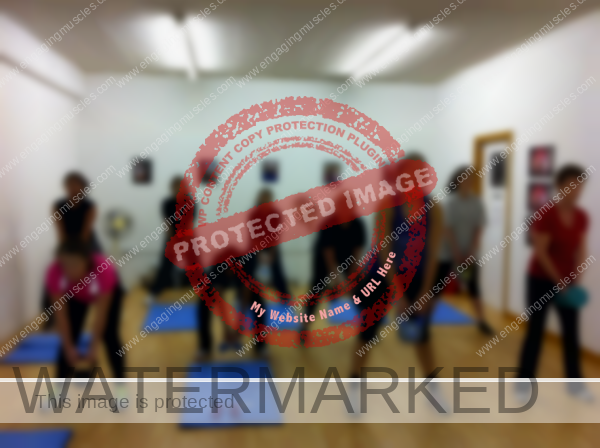Isometric exercise is a life hack for avoiding pain, muscle tightness, and injuries in the workplace.
If isometrics are so beneficial for avoiding injuries in the workplace, why aren’t more organizations implementing it?
Changing minds is easier said than done.
What’s even more difficult is changing perspective* with first principles thinking*.
First principles force us to let go of paradigms. “You can trade in a ton of effort in exchange for the right perspective…”
— Shane Snow, Author of Smartcuts
Year after year, billions of dollars are spent on back pain.
Reaching a point where back surgery is all that’s left doesn’t have to be the way.
When you can’t find a practitioner that can get to the source, the pain will drive you to undergo more invasive procedures.
Feeling like you have run out of options, you will resort to back surgeries that can’t be undone.
In our daily lives, we’re often guessing about the facts based on hints, hunches, bias, misinformation, and the like.
— Scott Adams, Creator of Dilbert and author of Loserthink
Tribalism and the herd mentality is what keeps misinformation circulating.
(Perspective)
From the training rooms of professional teams to the wellness programs of companies, leaders tend to believe that colleges are providing you with all there is to know about exercise.
The math on the amount of pain and injuries in your workplace tells a different story.
Case in point, neck, and shoulder pain is prevalent throughout the organization that employs you.
(Priorities)
Rather than do what’s in alignment with first principles thinking*, I’m willing to bet that your corporate wellness program promotes what’s popular.
The organization that you work for would like to prevent repetitive use injuries. Then, the wellness team promotes exercise programs that require you to repeat the same motions over and over again.

To put what you just read into perspective*, repeating joint motions prior to clearing asymmetries and compensation adds insult to injury.
While your exercise program is promoted as ‘healthy’ in the workplace, the truth is, the repetitive nature of a dynamic exercise encourages more compensation. 🧐
Continuing to perform exercises that increase compensation leads to pain and injuries.
To get a feel for how far the ladder is from the right wall, professional sports teams continue to sign athletes to multi-million dollar contracts without knowing if muscles are capable of pulling at the right time.
The billion-dollar question that’s worth asking, How many workplace injuries would you avoid when second-layer knowledge and the implementation of upstream* maintenance was built into your corporate wellness program?
First-principles thinking* starts with physics*.
What you want from a strength exercise is possible when force is applied to muscles in ways that allow for an isometric contraction.

There is also evidence to show that regularly performing an isometric exercise will keep your blood pressure from getting out of control.
When socially accepted beliefs aren’t getting the job done, you’ll find that it pays to look at that which is counter-intuitive.
The time that it takes you to foam roll and stretch may feel good at the time, but the results are short-lived.
(Principles)
Deep tissue massage, foam rolling, and stretching have one thing in common — they decrease stability*.
Decrease stability* and you have an increase in instability*.
When there’s instability* at a spinal joint, your muscles tighten to protect and prevent you from doing more harm.
What you just read is an example of how your body will find a way to compensate.
Attempting to release muscles with foam rollers, deep tissue massage, and the like, goes against what your body has figured out for you.
Instead of buying into the bias that tight muscles need to be released, your best bet is to embrace what’s missing.
Implementing exercises that increase stability* is what’s missing.
Recently, I had the inventor of Isophit on the Engaging Muscles Podcast.
At one point in our conversation, Brad Thorpe shared a fundamental truth about dynamic exercise, “You can never be stable when you are moving.”
Whether you are using a standing desk or sitting throughout your workday, muscles are responsible for holding your skeleton in those positions.
The static postures that you maintain throughout the day require muscles to isometrically contract.
The goal of the organization that you work for is to prevent pain or injury.
In order for you to achieve the goal, you’ll want to perform strength exercises that increase your muscles’ ability to tolerate the demands that are placed upon your body.
Isometric exercise is the way. Isometrics challenge your muscles in ways that align with the postures that you maintain throughout the day.
SHIP
(Art)
Can’t get to Dallas? Get details on how you can work with me from home.
Thanks for taking the time to read this post! If you enjoyed this post, please subscribe to Engaging Muscles. You can also like Engaging Muscles on Facebook, subscribe to my YouTube Channel or feel free to connect with me on Twitter @rickmerriam.
Books Mentioned
Smartcuts by Shane Snow
Loserthink by Scott Adams
[Some of the links I’ve shared with you are affiliate links. If you make a purchase using one of these links, I will receive a commission. The commission doesn’t cost you any more than what you would pay for these items on Amazon (as an example). When you use any one of these affiliate links, you’re supporting the Engaging Muscles blog. That’s also the case with the Engaging Muscles podcast. This will help me to keep putting out valuable content.]Photography Credit
Photo Credit: ATTITUDE FITNESS worldwide Flickr via Compfight cc

